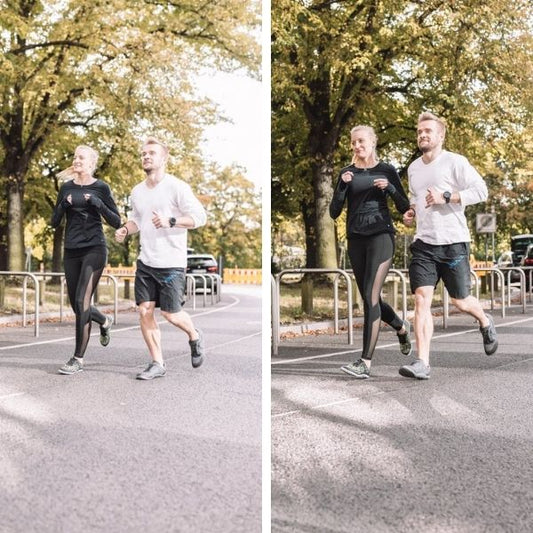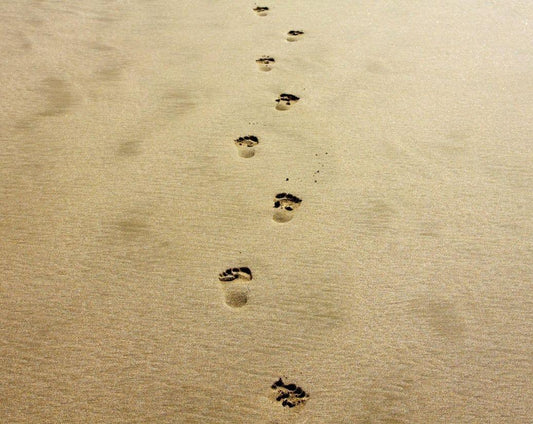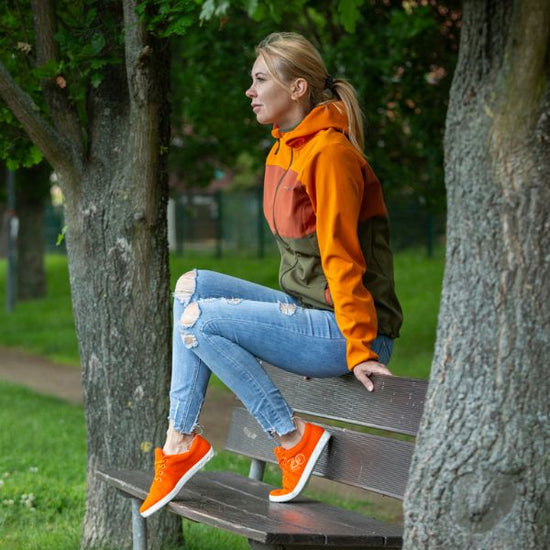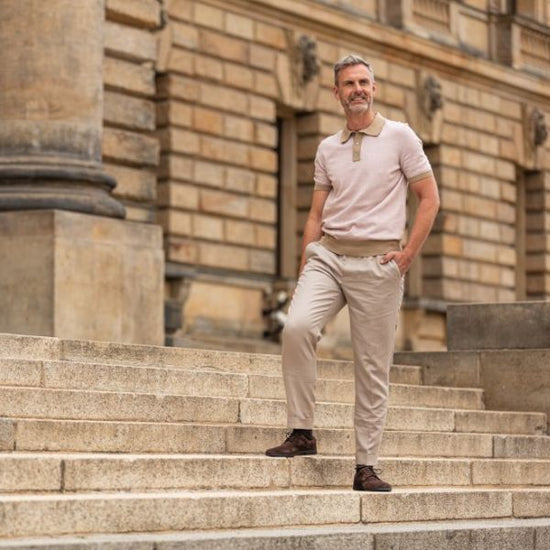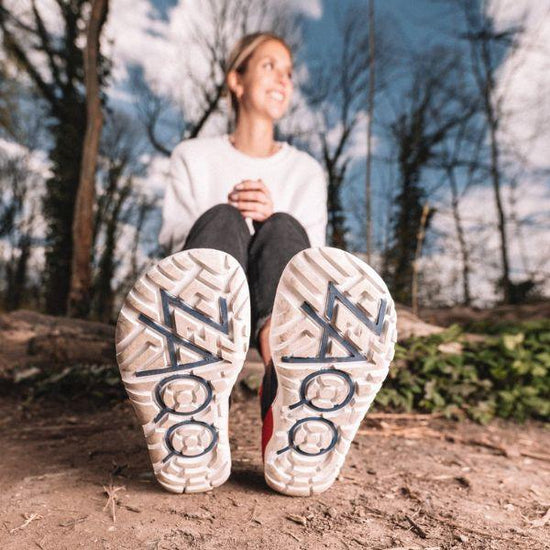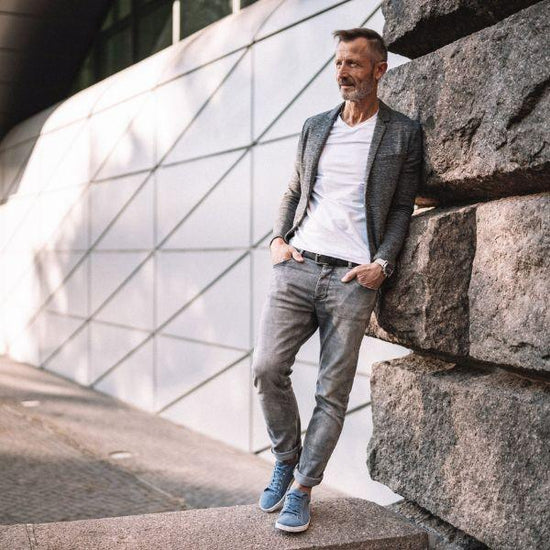Barefoot running – The technique briefly explained
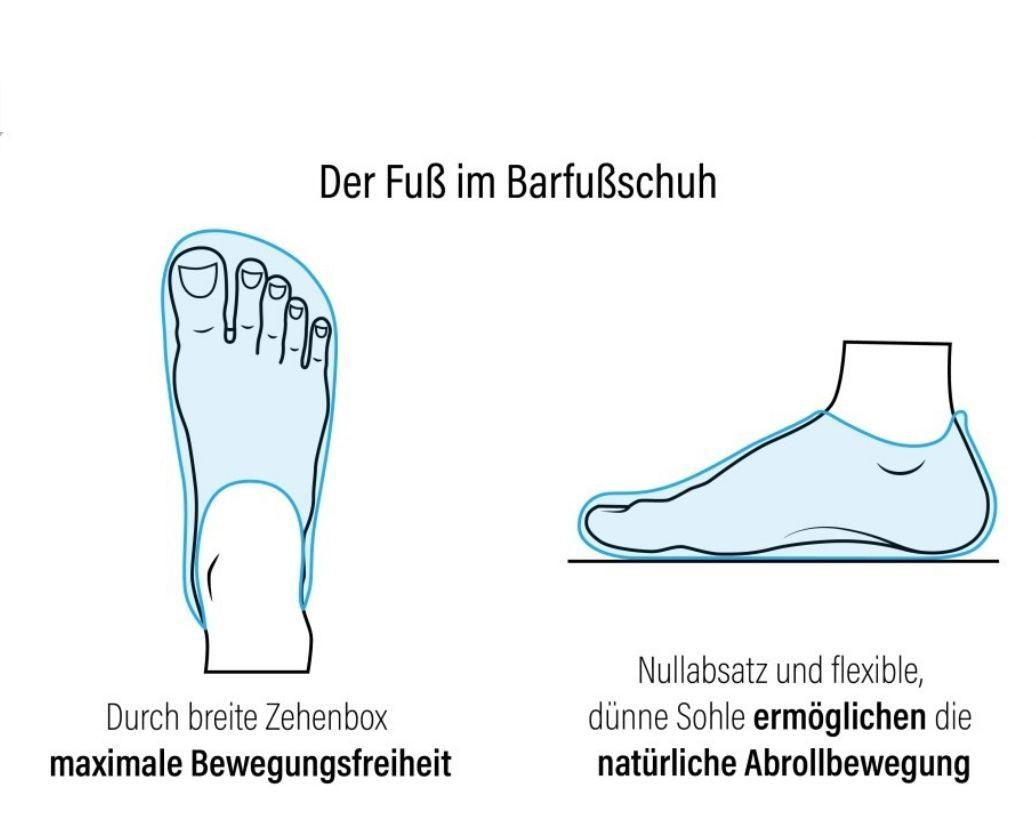
Anyone who deals with the technique of barefoot running quickly understands why shoes with thick soles, high heels, and too narrow a fit are not health-promoting and why it is better to switch to barefoot shoes.
To recognize the benefits of barefoot shoes, we would like to briefly explain the basics of barefoot running to you here.
The Basics of Barefoot Running
Barefoot running may sound like a new trend, but far from it. It is rather a return to natural running.
In natural walking, stability and safety are the focus, regardless of running speed, surface, or weather conditions. When running barefoot, we have all the prerequisites for a safe and joint-friendly walk due to the anatomy of the foot and the nerve pathways running there. Nature has given us everything we need for this.
Barefoot running trains important muscle groups, strengthens the back at the same time, and promotes circulation. Additionally, when running barefoot, we can absorb electrons, which we need in sufficient quantities for a strong immune system. You can read more about the latter topic under the keywords Grounding or Earthing.
In general, the following three aspects can be particularly highlighted when running barefoot:
Intrinsic Feedback via Nerves
The sole of the foot has the highest concentration of nerve endings. When running barefoot, movement sequences can be perceived and regulated through them.
Different surfaces from slippery, soft, warm, cold to uneven or prickly are perfectly sensed when running barefoot and transmitted via the nerve pathways. Intuitively, the movement sequence is adjusted to always run safely and stably and to ward off dangers.
Movement Control via the Big Toe
The human foot is incredibly complex in its structure. It consists of 36 bones, 33 joints, and over 20 muscles. In its natural form, the foot has a V-shape, spreading wide at the front, as the toes are not tightly pressed together.

The big toe is particularly important for walking. It provides balance when running barefoot, controls movement, and ensures stability. That the big toe plays a central role can be seen at first glance, as it is significantly larger than all the others. In its natural form, it is particularly strong and stands out slightly. Only in this way can the big toe perform its intended tasks perfectly.
Studies show that the feet of people who walk barefoot a lot not only have a natural V-shape but are significantly wider than those of people who are always in shoes that are too tight. This impressively shows that the foot of barefoot runners has retained its natural anatomical form and has significantly stronger muscles.
Natural Shock Absorption via Muscles and Tendons
When walking barefoot, the anatomy of the foot provides a very natural shock absorption. Shock-absorbing shoes are absolutely unnecessary.
The foot arch behaves like a spring during movement; it can stretch and contract to cushion impacts. The so-called windlass mechanism causes the longitudinal arch to rise and the foot to stabilize during walking, running, and jumping.
Additionally, nature has given us a small fat pad on the heel that provides extra shock absorption when stepping.
With this knowledge, you probably want to take off your shoes immediately and continue walking barefoot. Perhaps you will feel pain in your muscles, tendons, and joints after a short time.
Due to wearing shoes that are too tight for years, we have forgotten our natural movement patterns while walking. The muscles have atrophied, and even the rolling motion seems quite cumbersome at first. We need to slowly get used to walking barefoot and ideally do special exercises to relearn the natural gait without footwear.
Problems with Conventional Footwear
Shoes are considered an important fashion accessory today. For many wearers, appearance is more important than health. The shape of the shoe lasts is generally too narrow, and most models taper too sharply at the front. Over the years, our feet have become accustomed to being cramped in shoes. Many people do not even notice that this changes the natural shape of their feet.
Once you understand the basics of barefoot walking, you quickly realize why it is so healthy and why modern footwear with thick soles, cushioning properties, and overly tight fits can lead to health problems.

Wearing such shoes alters the foot's anatomy, and the nerve pathways' contact with the ground is lost. This leads to both muscle atrophy in the foot and a complete loss of intrinsic feedback. Due to the lack of foot muscles and the information loss perceived through nerve pathways, the entire gait pattern changes.
Modern shoes with all their features lead us to develop an incorrect running style. The steps become larger, and proper rolling is no longer done. The foot is constantly constricted, and the important foot muscles atrophy. The result is various anatomical changes such as flat feet, splay feet, and even hallux valgus.
However, when the foot changes its natural shape, it also affects the entire body. Walking without the usual footwear feels unstable and simply not good, even though it is the most natural form of movement. It is often the case that the causes of back pain, knee and hip joint complaints, or herniated discs lie in the foot.
Unfortunately, the risk of injury in sports also increases if the foot, with all its wonderful properties, no longer works properly due to the lack of muscles and weak ligaments and tendons.
The very best for a healthy anatomy would be permanent barefoot walking. Since this is not always possible in our modern society, one should rely on footwear that ensures the natural movement and ground contact are maintained. With ZAQQ barefoot shoes, you can achieve exactly that.
ZAQQ barefoot shoes support the natural gait

Barefoot shoes support intrinsic feedback
With our ZAQQ barefoot shoes, the sole is so thin and flexible that impulses are transmitted to your nerve pathways. The intrinsic feedback is transmitted despite the shoe and ensures that you can intuitively adjust your movements as you would when walking barefoot.
Barefoot shoes enable movement control via the big toe
ZAQQ barefoot shoes have a wide toe box. This allows your foot to move within the natural anatomy of the shoe. The toes have enough space to spread out in a V-shape, and the big toe can balance and stabilize movements effortlessly, as nature intended.
Maintenance and development of muscles as natural shock absorbers
Those who have strong muscles and tendons do not need shoes with shock absorption. Shock absorption is naturally present in every healthy person. The prerequisite for this is the natural gait to continuously engage the muscles and tendons.
In ZAQQ barefoot shoes, your foot has enough space and can roll and move over the thin, highly flexible sole as nature intended. This way, you train your foot muscles with every step and engage your tendons and ligaments naturally.
Of course, our thin and flexible barefoot soles have no drop. Just like walking barefoot, you have no height difference from heel to ball in our barefoot shoes.
Switching to barefoot shoes
If you start walking in barefoot shoes after years of wearing conventional footwear, your muscles and tendons must first get used to the new strain. You might experience muscle soreness, and perhaps even slight joint or back discomfort. Like any other training, your foot muscles need to be built up slowly and get used to the new strain.
Don’t make the mistake of wanting too much too soon. Make sure to give your body time to adapt to the new demands. Your foot muscles, along with the associated tendons and ligaments, have likely not been properly engaged for years and have consequently atrophied.
Try to walk without shoes as often as possible to build up the muscles. The easiest way is on a soft lawn or at the beach. Later, you can tackle terrains that demand more from your feet.
If you want to switch to barefoot shoes but haven't trained your foot muscles yet, it's advisable to wear them only for a few hours at first and increase the load day by day. This way, tendons and ligaments can get used to the load, and the foot muscles can gradually build up. Only with strong muscles as well as stable ligaments and tendons will you develop a natural and joint-friendly gait.






